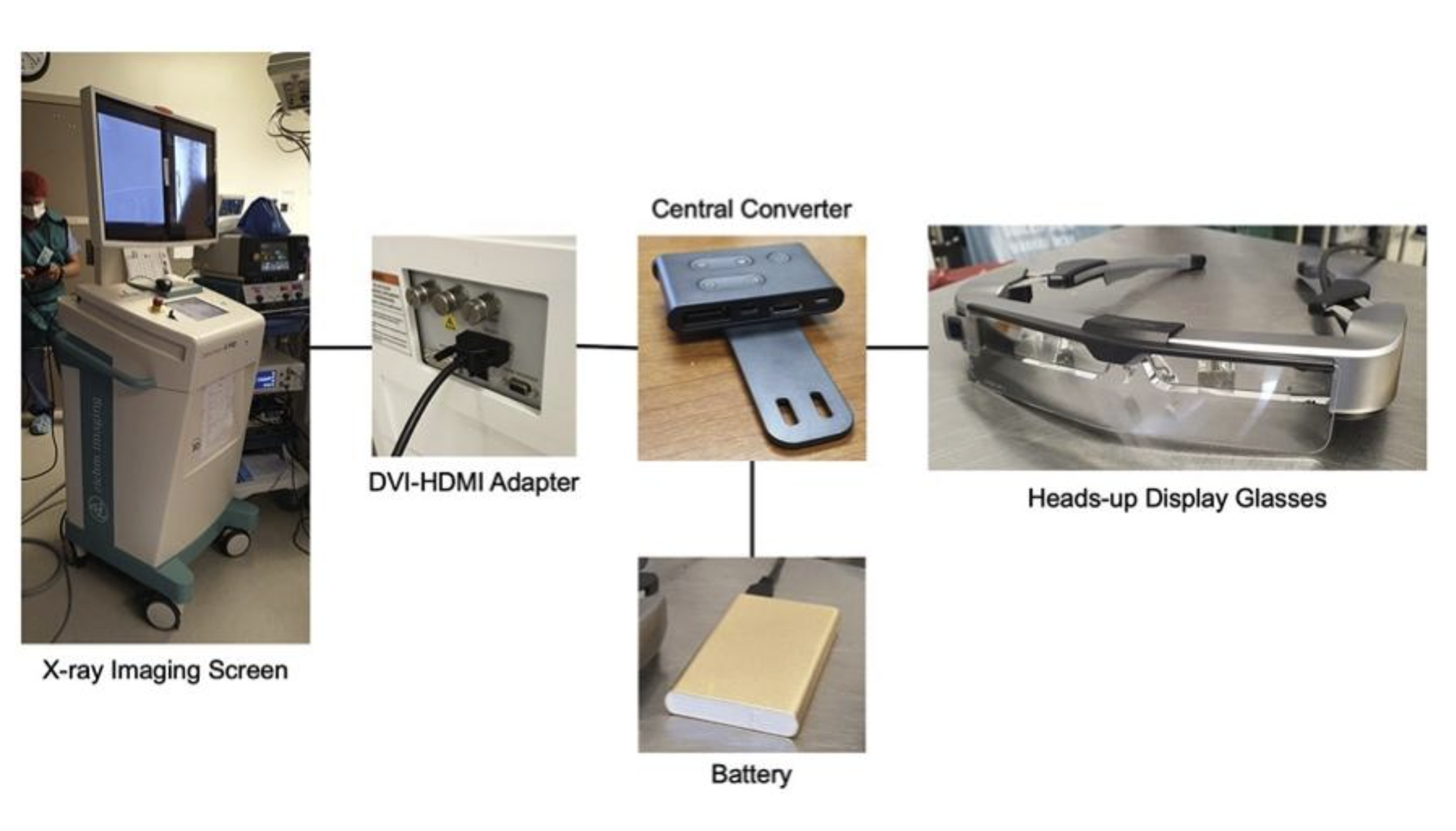Article by: Bhavya and Avani
Design by: Medha and Bhavya

A first-of-its-kind wireless set-up, these smart glasses use Augmented reality (AR) technology to reconstruct three-dimensional (3D) images of anatomical structures from computed tomography and magnetic resonance imaging data and superimpose the virtual images onto a view of the surgical field.
Moverio BT 35-E smart glasses can be connected to operating room imaging modalities (i.e., fluoroscopy and 3D navigation platforms) via an HDMI converter, allowing for continuous high-definition video transmission.

Benefits
Effect on ergonomics
The ability to make fine adjustments without moving or looking away from the surgical field is replicable, and with minimal movement, good patient outcomes can be achieved.
Reduced health risks
Occupational injuries are common amongst orthopaedic surgeons. Surveys report that 66.7% of orthopaedic surgeons have work-related musculoskeletal disorders. Furthermore, given that orthopaedic surgeons have a high reliance on projected X-ray imaging during procedures, the constant shifting of vision from patient to monitor may be contributory to the aggravation of this dilemma.
Intraoperative radiation exposure is another key occupational hazard to orthopaedic surgeons. Compared to workers unexposed to routine radiation, orthopaedic surgeons were found to be more than five times more likely to develop cancer. Intraoperative assessment of reduction and implant position during treatment of fractures often require mobile C-arms or other imaging modalities which emit ionising radiation. This ionising radiation attributes to the high radiation exposure, leading to a high risk of cancer development among orthopaedic surgeons.
However, with the use of smart glasses potentially improving the time efficiency of operations, these shorter operation times would enable surgeons to shorten their exposure to radiation. This could significantly reduce radiation risk to medical professionals. More specifically, the risk of developing cancer.

Limitations
The tested smart glasses were only able to project a single-screen image. Hence in procedures where a comparison between multiple images is required, there may be limited benefits to the surgical ergonomics.
Additionally, although projected images were sharp and prominent on darker backgrounds, on blue drapes or the patient, visual acclimation was required for the delivery of a focused image.
References
Saylany A, Spadola M, Blue R, Sharma N, Ozturk AK, Yoon JW. The use of a novel heads-up display (HUD) to view intra-operative x-rays during a one-level cervical arthroplasty. World Neurosurgery. 2020 Jun 1;138:369-73.
Park S, Park J, Ghani R, et al. (February 08, 2022) Visualising the Future of Orthopaedic Surgery: A Novel Application of Wireless Smart Glasses to Visualise Intraoperative Imaging. Cureus 14(2): e22004. doi:10.7759/cureus.22004
https://www.sciencedirect.com/science/article/pii/S1878875020305441